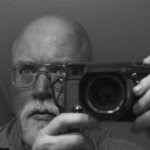War Photographer (2001)

Robert Capa (Andre Friedmann) and James Nachtwey are the two most prominent war photographers of record. Capa's biography, Blood and Champagne, is an entertaining book, as is John Steinbeck's A Russian Journal, a brief summary of a trip to Russian taken by Steinbeck and Capa after WWII. Both are recommended reads.
There is no biography of James Nachtwey's life [yet], but the documentary War Photographer is certainly a window into his life's work. While Capa and Nachtwey may be the two greatest war photographers, there couldn't be two more different people. Capa was a smoking, drinking, womanizing free spirit who took photographs for the money (to finance the smoking, drinking, and womanizing) and the fame. Nachtwey was cut from a different bolt of cloth. He is reserved, soft-spoken, and pensive. And he takes photographs in hopes of making a difference.
The 90-minute film (video, actually) begins with Capa's familiar quote "If your pictures aren't good enough, you aren't close enough." You then get a very good feel for just how close Nachtwey gets to his subjects. A micro-video camera mounted on the top of Nachtwey's Canon SLR documents his position and distance while shooting in a variety of situations. He does get close, and is able to do so in no small part due to his appearance. He is tall, thin, and completely innocuous in his demeanor. While Capa might have looked like a swaggering Mediterranean movie star type, Nachtwey looks like a male model for Wall Street business clothing. He looks empathetic, and people let him photograph them during the most terribly tragic moments in their life.
While his primary genre is war photography, there is relatively little emphasis on the dead. A dead soldier might be regarded as a pawn that has been taken out of the game. Once killed, he no longer ceases to exist, at least as a being with feelings. It is difficult to feel sorrow for the dead as they no longer suffer. Nachtwey devotes nearly all of his attention on those who continue to suffer from war, the parents, the spouses, the children, and the siblings of the dead, those still living. And it is easy to grieve for them.
In addition to photographing war, Nachtwey documents destitution caused by poverty and famine. Many of those photographs are far more tragic than the war photographs. And he spends considerable time on deplorable working and living conditions (primarily in Indonesia).
This is not a feel-good movie, and it might not appeal to a non-photographer. I'm not sure I would want to see it twice in the same year. It did garner an Academy Award nomination for Best Documentary Feature in 2001. The primary dialogue is German and English, so there are subtitles. It has been translated (via subtitles) into Spanish, French, German, and Italian.


<< Home